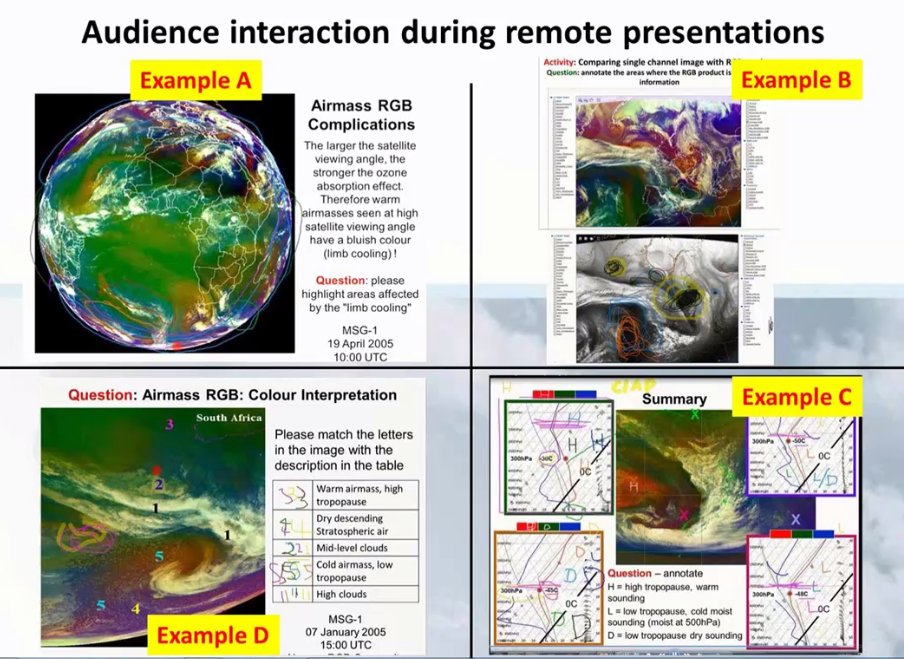Thanks for the feedback Vesa
I have given much thought about how to make my session content interactive. Within the class room at our Bureau of Meteorology Training Centre this is relatively easy. I am familiar with all the resources at hand and I have the experience of a number of years of teaching. I am familiar with the cultural setting of the classroom. Typically I like to give an introduction of the material of 10-15 minute duration followed by an interactive exercise and discussion to consolidate the learning. I like to go through 2-3 cycles like this during a one hour session. I normally provide handouts where the students can annotate their answers during the exercises. I encourage students to work in teams of 2 or 3 and tell them that this is good practise for when they are forecasting. I usually walk around the classroom during these exercises and offer assistance, maybe even drop some hints, and keep an eye on the progress of the students. In this case it is possible to use any of the question formats A, B, C or D in the previous attachment fairly successfully. I can usually deduce this from the "buzz" of discussion from the classroom during the exercise and from glimpsing each students progress during my walk around the classroom. After a time I usually ask for a "volunteer group" in the audience to give their answer to one of the questions in front of the whole class. I ensure that different "volunteer groups" have the opportunity to offer their solution to other questions. Example D can be a fairly quick exercise, whereas example C can take a little longer, due to the greater detail in the question - ie F160 sounding data.
It becomes a bit more tricky when you are teaching in a new environment and to a "new" audience either face to face or using Webinar software. For example, if you are teaching in a classroom in a foreign country then you may not have the opportunity to print out "handouts" prior to your training session. In this case it is possible that when the question slide is shown to the audience, then the more experienced attendees will offer answers verbally in front of the whole classroom. This means that not all of the classroom attendees will benefit from the learning experience equally.
In a Webinar - remote session it is a lot easier for the remote audience to be distracted and not to pay continuous and undivided attention during the 10-15 minute introduction session. Therefore I have found that you will get a better "active" response from the audience during the interactive session by offering a very structured questions such as Example D. Usually all of the attendees will know at least one or two of the five answers and this will encourage them to participate. The discussion of the results at the conclusion of the exercise can then help in filling in any "distraction gaps" that attendees may have experienced during the initial presentation.
Nowadays a lot of the students within our Grad Dip Met course are using tablets to annotate the solutions to questions so this also needs to be considered. I find it easier to monitor the students / attendees progress when they are annotating their solutions on an A4 sheet of paper compared to using a high-tech stylus on a shiny, reflective, sleek "little" tablet :-)
Any additional feedback and reflections on this topic would be appreciated.

